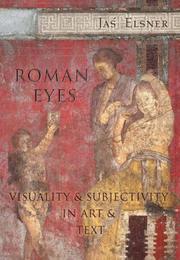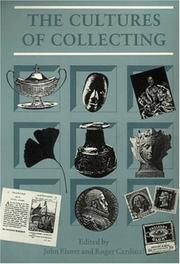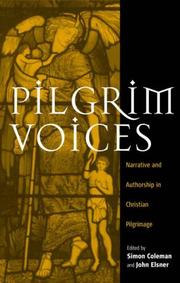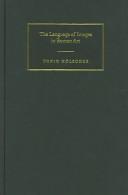| Listing 1 - 9 of 9 |
Sort by
|

ISBN: 9780691096773 0691096775 0691240248 Year: 2007 Publisher: Princeton: Princeton university press,
Abstract | Keywords | Export | Availability | Bookmark
 Loading...
Loading...Choose an application
- Reference Manager
- EndNote
- RefWorks (Direct export to RefWorks)
In 'Roman Eyes', Jas Elsner seeks to understand the multiple ways that art in ancient Rome formulated the very conditions for its own viewing, and as a result was complicit in the construction of subjectivity in the Roman Empire. Elsner draws upon a wide variety of visual material, from sculpture and wall paintings to coins and terra-cotta statuettes. He examines the different contexts in which images were used, from the religious to the voyeuristic, from the domestic to the subversive. He reads images alongside and against the rich literary tradition of the Greco-Roman world, including travel writing, prose fiction, satire, poetry, mythology, and pilgrimage accounts. The astonishing picture that emerges reveals the mindsets Romans had when they viewed art--their preoccupations and theories, their cultural biases and loosely held beliefs. 'Roman Eyes' is not a history of official public art--the monumental sculptures, arches, and buildings we typically associate with ancient Rome, and that tend to dominate the field. Rather, Elsner looks at smaller objects used or displayed in private settings and closed religious rituals, including tapestries, ivories, altars, jewelry, and even silverware. In many cases, he focuses on works of art that no longer exist, providing a rare window into the aesthetic and religious lives of the ancient Romans.
Art, Classical. --- Aesthetics, Roman. --- Visual perception. --- Art antique --- Esthétique romaine --- Perception visuelle --- Rome ancienne --- --Iconographie --- --Art --- --Littérature --- --Arts, Classical --- Aesthetics, Roman --- Visual Perception --- Arts, Classical. --- Esthétique romaine --- Arts, Classical --- Visual perception --- Optics, Psychological --- Vision --- Perception --- Visual discrimination --- Classical arts --- Roman aesthetics --- Psychological aspects --- Iconographie --- Art --- Littérature

ISBN: 0948462507 0948462515 Year: 1997 Publisher: Londen : Reaktion Books,
Abstract | Keywords | Export | Availability | Bookmark
 Loading...
Loading...Choose an application
- Reference Manager
- EndNote
- RefWorks (Direct export to RefWorks)
collection development --- Art --- collecting --- collectie --- collectievorming --- #SBIB:316.7C210 --- #SBIB:316.7C324 --- kunst --- musea --- museologie --- collecties --- verzamelingen --- Schwitters Kurt --- Cook James --- Habsburgers --- Soane John --- Willson Peale Charles --- Freud Sigmund --- Parijs --- Opie Robert --- 069 --- Collectors and collecting --- Collectibles --- Collecting --- Collection and preservation --- Hobbyists --- Cultuursociologie: kunst: algemeen --- Culturele infrastructuur: musea --- Miscellanea. --- Social aspects. --- Social aspects --- Collectors and collecting - Miscellanea. --- Miscellanea --- CDL

ISBN: 1571816038 1785330616 Year: 2003 Publisher: Providence Berghahn
Abstract | Keywords | Export | Availability | Bookmark
 Loading...
Loading...Choose an application
- Reference Manager
- EndNote
- RefWorks (Direct export to RefWorks)
Research on pilgrimage has traditionally fallen across a series of academic disciplines - anthropology, archaeology, art history, geography, history and theology. To date, relatively little work has been devoted to the issue of pilgrimage as writing and specifically as a form of travel-writing. The aim of the interdisciplinary essays gathered here is to examine the relations of Christian pilgrimage to the numerous narratives, which it generates and upon which it depends. Authors reveal not only the tensions between oral and written accounts but also the frequent ambiguities of journeys - the possibilities of shifts between secular and sacred forms and accounts of travel. Above all, the papers reveal the self-generating and multiple-authored characteristics of pilgrimage narrative: stories of past pilgrimage experience generate future stories and even future journeys.
Christian pilgrims and pilgrimages in literature. --- Christian pilgrims and pilgrimages --- Travel in literature. --- Travel writing --- History. --- Christian pilgrims and pilgrimages in literature --- Travel in literature --- 248.153.8 --- 248.153.8 Bedevaarten. Pelgrimstochten--(algemeen) --- Bedevaarten. Pelgrimstochten--(algemeen) --- Voyages and travels in literature --- History
Book
ISBN: 0714117382 Year: 1995 Publisher: London British Museum press
Abstract | Keywords | Export | Availability | Bookmark
 Loading...
Loading...Choose an application
- Reference Manager
- EndNote
- RefWorks (Direct export to RefWorks)

ISBN: 9781785330612 9781571816030 1571816038 1785330616 Year: 2003 Publisher: New York ; Oxford, [England] : Berghahn Books,
Abstract | Keywords | Export | Availability | Bookmark
 Loading...
Loading...Choose an application
- Reference Manager
- EndNote
- RefWorks (Direct export to RefWorks)
Research on pilgrimage has traditionally fallen across a series of academic disciplines - anthropology, archaeology, art history, geography, history and theology. To date, relatively little work has been devoted to the issue of pilgrimage as writing and specifically as a form of travel-writing. The aim of the interdisciplinary essays gathered here is to examine the relations of Christian pilgrimage to the numerous narratives, which it generates and upon which it depends. Authors reveal not only the tensions between oral and written accounts but also the frequent ambiguities of journeys - the possibilities of shifts between secular and sacred forms and accounts of travel. Above all, the papers reveal the self-generating and multiple-authored characteristics of pilgrimage narrative: stories of past pilgrimage experience generate future stories and even future journeys.
Tourism --- Christian pilgrims and pilgrimages --- Travel writing --- Christian pilgrims and pilgrimages in literature. --- Travel in literature. --- History.
Book
ISBN: 9780199355631 0199355630 0190629630 0199355649 0199355657 Year: 2017 Publisher: New York: Oxford university press,
Abstract | Keywords | Export | Availability | Bookmark
 Loading...
Loading...Choose an application
- Reference Manager
- EndNote
- RefWorks (Direct export to RefWorks)
Latin poetry --- History and criticism. --- History and criticism --- Latin poetry - History and criticism

ISBN: 0521662001 0521665698 9780521662000 9780521665698 Year: 2004 Publisher: Cambridge: Cambridge university press,
Abstract | Keywords | Export | Availability | Bookmark
 Loading...
Loading...Choose an application
- Reference Manager
- EndNote
- RefWorks (Direct export to RefWorks)
This book develops a new theory for the understanding of Roman pictorial art. By treating Roman art as a semantic system it establishes a connection between artistic forms and the ideological messages contained within. The history of Roman art traditionally followed the model of a sequence of stylistic phases affecting the works of their era in the manner of a uniform Zeitgeist. By contrast, the author shows different stylistic forms being used for different themes and messages. The reception of Greek models, a key phenomenon of Roman art, thus appear in a new light. The formulations of specific messages are established from Greek art types of different eras serving to express Roman ideological values: classical forms for the grandeur of the state, Hellenistic forms for the struggling effort of warfare. In this way a conceptual and comprehensible pictorial language arose, uniting the multicultural population of the Roman state.
Art, Roman. --- Symbolism in art --- Culture dans l'art --- Culture in art --- Cultuur in de kunst --- Symbolism in art - Rome --- Rome - History - Empire, 30 B.C.-476 A.D - Antiquities --- Art, Roman --- Allegory (Art) --- Signs and symbols in art --- Art --- Roman art --- Classical antiquities --- Symbolisme dans l'art --- Art romain --- Rome --- Art [Roman ] --- History --- Rome - History - Empire, 30 B.C.-476 A.D. - Antiquities
Book
ISBN: 9074815731 9789074815734 Year: 2004 Publisher: Huy: Kunchab,
Abstract | Keywords | Export | Availability | Bookmark
 Loading...
Loading...Choose an application
- Reference Manager
- EndNote
- RefWorks (Direct export to RefWorks)
Le bouddhisme tibétain est riche d'une longue tradition de ce que l'on appelle " chants de l'expérience " : ces poèmes, composés par des maîtres réalisés, expriment clairement leurs expériences spirituelles profondes. Les poèmes présentés dans cette anthologie comprennent des£uvres de maîtres réalisés des quatre écoles du bouddhisme tibétain. Ils parlent de thèmes contemplatifs typiquement bouddhistes, comme la fugacité de la vie, la vacuité d'existence par soi, et l'ardent désir de solitude du méditant. Le choix des £uvres laisse deviner aussi la merveilleuse combinatoire des dimensions personnelle et universelle de l'expérience du poète. Certains poèmes décrivent de manière quasiment graphique les caractéristiques universelles du vieillissement et de la mort, d'autres expriment des sentiments auxquels beaucoup de lecteurs contemporains peuvent toujours s'identifier. Les chants présentés dans ce volume sont quelques-uns parmi les plus beaux et les plus émouvants jamais écrits en tibétain.
Book

ISBN: 9781785330612 Year: 2002 Publisher: New York Oxford
Abstract | Keywords | Export | Availability | Bookmark
 Loading...
Loading...Choose an application
- Reference Manager
- EndNote
- RefWorks (Direct export to RefWorks)
| Listing 1 - 9 of 9 |
Sort by
|

 Search
Search Feedback
Feedback About UniCat
About UniCat  Help
Help News
News